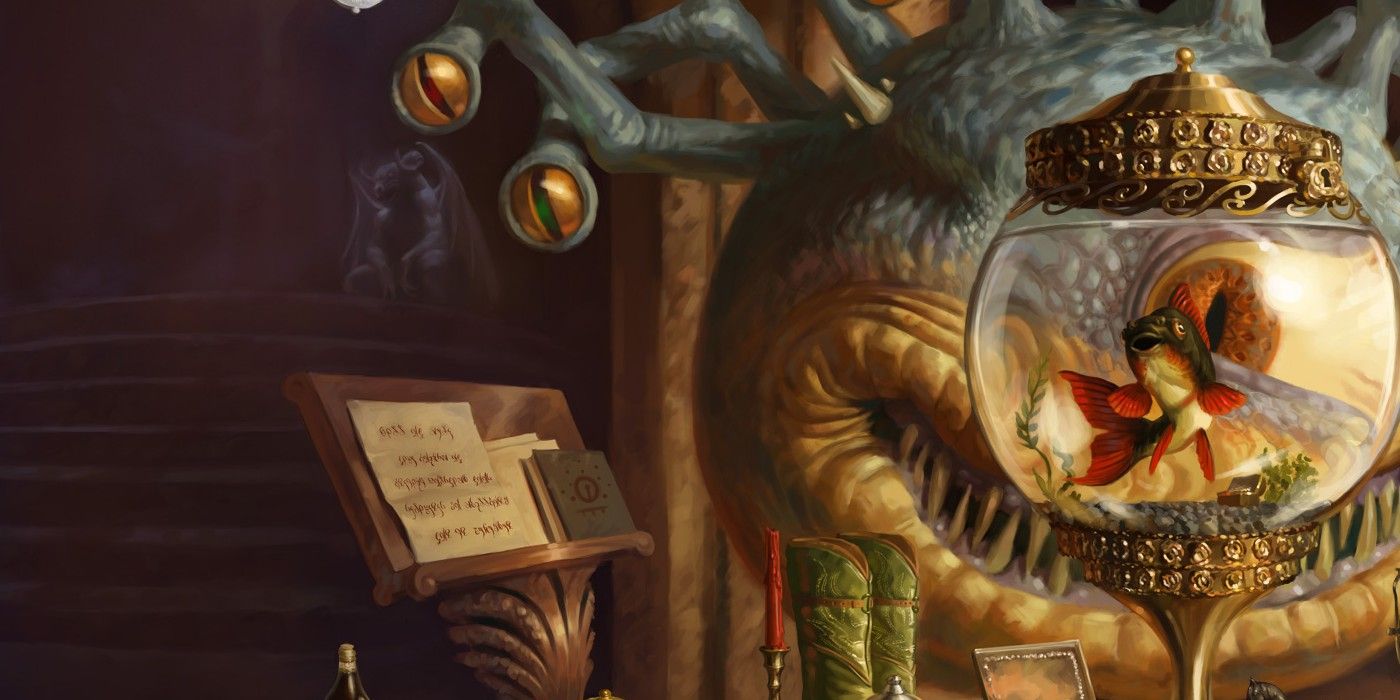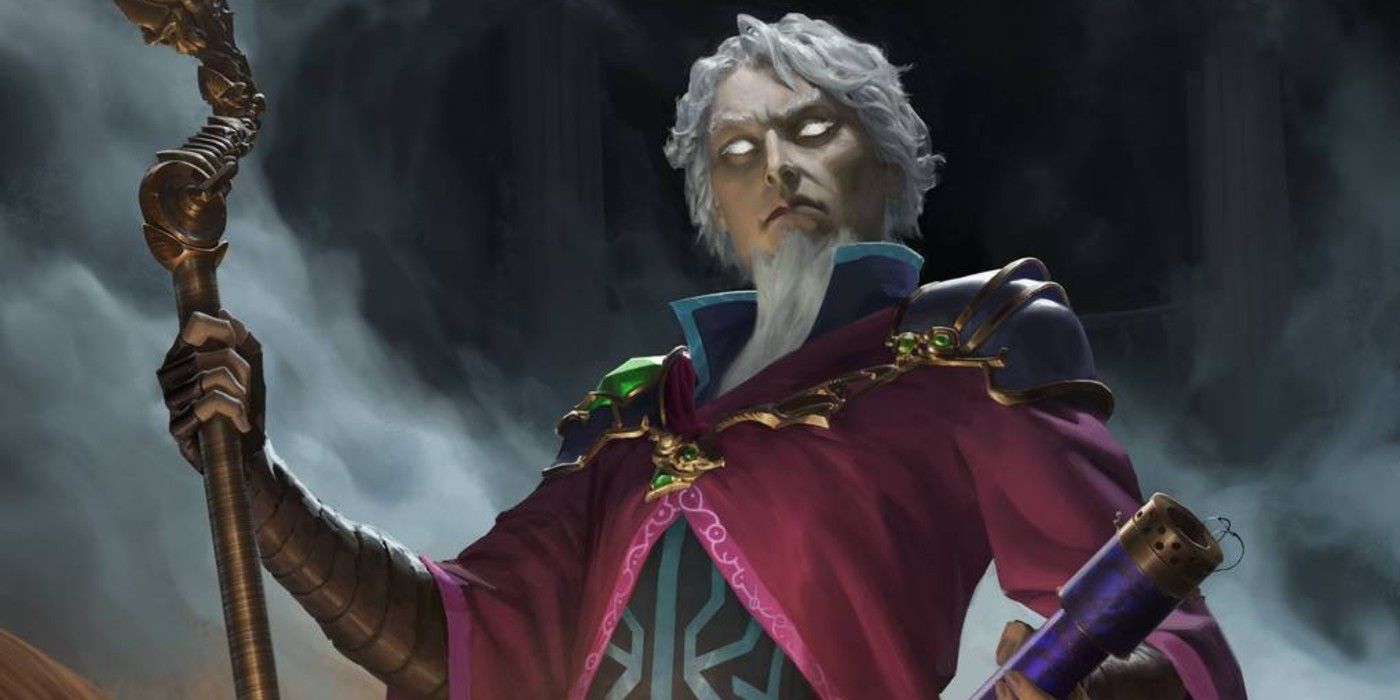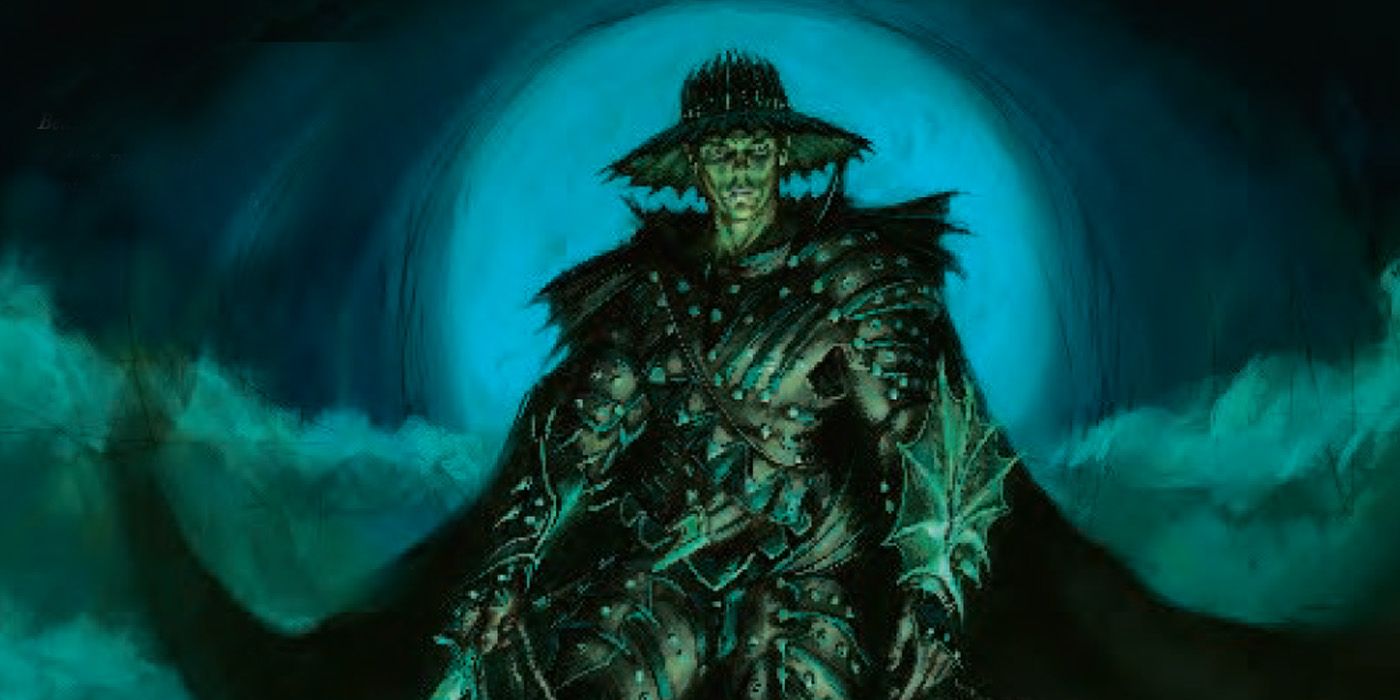One of the most engaging thing about Dungeons and Dragons is the sheer amount of adventures that are possible. DMs are not limited to running games from published adventure books like Ghosts of Saltmarsh, as they can create their own worlds using the general rules and ideas presented in the sourcebooks as a guide. And players are not limited to creating the traditional archetype of a hero, they can create whatever kinds of characters they can imagine. Sometimes, players and DMs wish to explore things on the other side of the alignment chart. With the introduction of the dhampir and other gothic lineages to Dungeons and Dragons 5e, many DMs and players are looking to explore an adventure where they are no longer the heroes.
DnD maintains a set of non-canon content meant for playtesting by the large community called the Unearthed Arcana. Through these playtest options, the game designers for DnD are able to get community feedback about new rules and options that can eventually become canonized in later books. A recent example is the inclusion of magic tattoos to 5e in Tasha's Magic Cauldron of Everything. The items were first presented as UA material and after playtesting by both the designers and community made their way into the newest sourcebook. The newest UA addition adds three gothic lineages (the term generally used by Wizards of the Coast in lieu of race currently) to the mix: the dhampir, the hexblood, and the reborn.
Gothic Lineages in 5e
The newest UA has added three new lineages based on traditional gothic horror archetypes for players to be able to emulate some classic movie monsters. The Hexblood is a cursed person, born under the sway (or as a result of) of a curse from a powerful Hag or other such creature. Their bodies exhibit the influence of the dark magic inhabiting them with disfigured faces or bony crowns protruding from their heads. This is one of the more creative backgrounds for 5e DnD introduced in a while, and is accompanied by the Reborn: a cursed sort of Frankenstein's monster creation that brought back to life either by magic or more technological means. They boast certain resistances that regular mortals would envy.
Arguably, the most anticipated of the gothic lineages included in this UA package is the Dhampir. A sort of in-between life and death creature that skirts the line between the vampires (which in DnD are incredibly powerful) and the living. DnD is full of weird monsters and the Dhampir mixes some of the most interesting features of those creatures. Given the traditional undying thirst vampires are known for, a Dhampir isn't limited to gaining sustenance only from blood. A Dhampir may be drawn voraciously towards any raw meat, and others may feed on the actual spiritual energy. Players experimenting with the gothic lineage may want to indulge the devils of their lesser nature, and setting up an evil-aligned campaign or one-shot may be the best way to satisfy that urge.
Building an Evil Campaign for 5e DnD
Building a one-shot can be a great way for DMs and players to try out new character and adventure ideas without making the full commitment to what can be a years-long campaign. It can also be a fun avenue to explore playing outside the archetypal hero roles typically seen in a regular DnD game, so creating a game on the evil side of the alignment chart could also be a way to try out some of these new gothic lineages in a setting that would better suit their creature feature aesthetic. It might also be a good excuse for DMs on the fence to buy some of the new Boneyard Miniatures.
The villainous organizations and figures in the DnD multiverse are as varied as the heroic ones. Some of them may fit the common tropes of world domination or enslaving the mortals of the realm, but while the idea of working for those figures may be appealing to some players, there are other options as well. The titular Xanathar from the sourcebook Xanathar's Guide to Everything is a good example of a figure to build an evil one-shot around. The Xanathar is a powerful Beholder, the iconic floating eyeball monsters often synonymous with DnD, who controls an expansive network of criminals throughout the Forgotten Realms.
Using the framework of Xanathar's crime syndicate would allow for involving a wide range of lineages, player backgrounds, and some subclasses that aren't normally as welcome in a group dedicated to saving the day. Plus, given the magical nature of the Beholders and the Xanathar, it would be easy to imagine a Dhampir employed by the crime boss to lead nighttime raids against powerful foes or rivals. The Dhampir has some features from its vampiric background that makes them more deadly at night without sacrificing the ability to travel during the day, and a powerful Dhampir may even be joined by a couple of tougher Reborn Fighters or Barbarians in case a situation goes south and requires a more forceful touch.
The Xanathar framework allows for players to experiment with more villainous character types without going full-blown murderously insane in game. The criminal nature would still call for tact and subtlety, so wanton murder could still be avoided, and the moral dilemma of attacking innocents can be sidestepped by focusing on missions or adventures that engage with other criminal or evil groups. While avoiding that level of true evil, players could still created grizzled criminals that would even give the brooding Drizzt of novel and Dark Alliance fame pause.
Player choice is paramount to any good DnD game and creating a short evil one-shot could be a great way to let them explore some less noble avenues of play without derailing a longer game, and with the UA introduction of the Dhampir, Hexblood, and Reborn lineages some players may be eager to try out their abilities while not being hamstrung by pesky lawful good morality. The Xanathar's crime syndicate can be a great place to set such a campaign, and is easily adaptable. Even one of the new short adventures from the upcoming Candlekeep Mysteries could quickly be adapted to fit such an idea. The possibilities are truly limited only by imagination, and a quick evil one-shot could be a fun way to playtest the new gothic lineages in 5e.
Dungeons and Dragons: Candlekeep Mysteries will be available digitally and physically on March 16, 2021.



